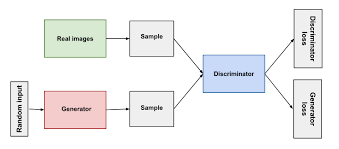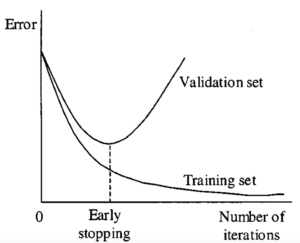A Brief History of This Tool: Who Developed It?
Generative Adversarial Networks (GANs) were introduced in 2014 by Ian Goodfellow and his colleagues at the University of Montreal. This groundbreaking concept was presented in the paper titled “Generative Adversarial Nets.” GANs have since revolutionised artificial intelligence by enabling machines to generate data that closely resembles real-world data.
What Are GANs?
Imagine GANs as a friendly art competition between two artists: one tries to create realistic paintings, while the other critiques them to distinguish fakes from genuine masterpieces. Over time, both artists improve—the painter creates more lifelike art, and the critic becomes better at spotting fakes. In neural networks, the generator creates new data instances, while the discriminator evaluates their authenticity.

Why Are GANs Being Used? What Challenges Are Being Addressed?
GANs address several significant challenges:
- Data Augmentation: Generate realistic synthetic data to augment limited datasets.
- Image Generation and Enhancement: Create high-resolution images, transform images (e.g., turning sketches into photos), and enhance image quality.
- Anomaly Detection: Identify unusual patterns by learning the normal data distribution and detecting deviations.
- Privacy-Preserving Data Sharing: Generate synthetic datasets that protect individual privacy while retaining statistical properties.
Global Market Impact:
According to Grand View Research, the global GAN market size was valued at USD 169.3 million in 2021 and is expected to expand at a compound annual growth rate (CAGR) of 34.6% from 2022 to 2030 (Source: Grand View Research, “Generative Adversarial Networks Market Size, Share & Trends Analysis Report,” 2022).
How Are GANs Being Used?
GANs involve two neural networks:
- Generator: Creates fake data resembling real data.
- Discriminator: Evaluates data and distinguishes between real and fake.
Training Process:
- The generator tries to fool the discriminator by producing realistic data.
- The discriminator tries to correctly identify real versus fake data.
- This process continues until the generator produces data indistinguishable from real data to the discriminator.
Different Types of GANs
Several variations of GANs are designed for specific tasks:
- Deep Convolutional GANs (DCGANs): Use convolutional layers, ideal for image data.
- Conditional GANs (cGANs): Generate data conditioned on input variables (e.g., creating images based on class labels).
- CycleGANs: Enable image-to-image translation without paired data (e.g., converting photos of horses into zebras).
- StyleGANs: Generate high-resolution images with control over styles and features, widely used in creating realistic human faces.
Key Features
- Adversarial Training: The core concept where two networks compete, leading to improved performance.
- Unsupervised Learning: GANs can learn from unlabeled data.
- Data Generation Capability: Ability to create new, realistic data instances.
Different Software and Tools for GANs
Developers can implement GANs using various tools:
- TensorFlow (with Keras): Extensive support and tutorials for building GANs.
- PyTorch: Preferred for its dynamic computation graph and ease of use in research.
- MXNet: Supports GAN implementation with efficient computation.
- GAN Lab by TensorFlow: An interactive tool to learn and visualise GANs.
Industry Application Examples in Australian Governmental Agencies
While specific public records of GAN applications within Australian governmental agencies are limited, GANs have significant potential in various areas:
- Geoscience Australia:
- Potential Application: Using GANs to enhance geological mapping by generating high-resolution satellite images from low-resolution data.
- Impact: Improves mineral exploration and environmental monitoring.
- Australian Institute of Health and Welfare:
- Potential Application: Employing GANs to generate synthetic healthcare data that preserves patient privacy.
- Impact: Enables researchers to access valuable data without compromising confidentiality.
- Australian Federal Police (AFP):
- Potential Application: Utilising GANs for forensic analysis, such as reconstructing blurred images or generating facial composites.
- Impact: Assists in criminal investigations and enhances public safety.
Note: The above examples are hypothetical and based on common applications of GANs relevant to governmental functions. Specific implementations may not be publicly disclosed.
How interested are you in uncovering even more about this topic? Our next article dives deeper into [insert next topic], unravelling insights you won’t want to miss. Stay curious and take the next step with us!








